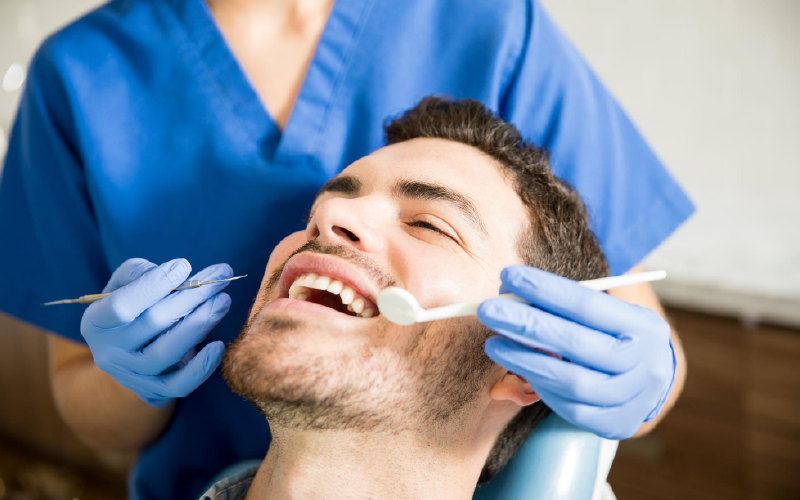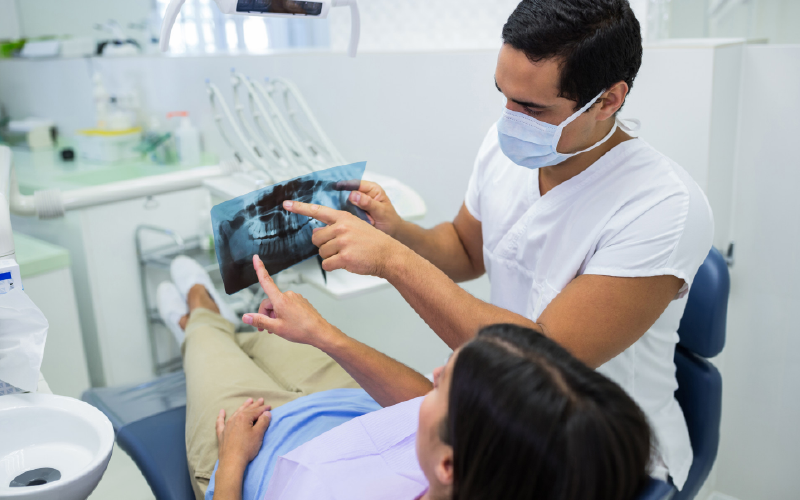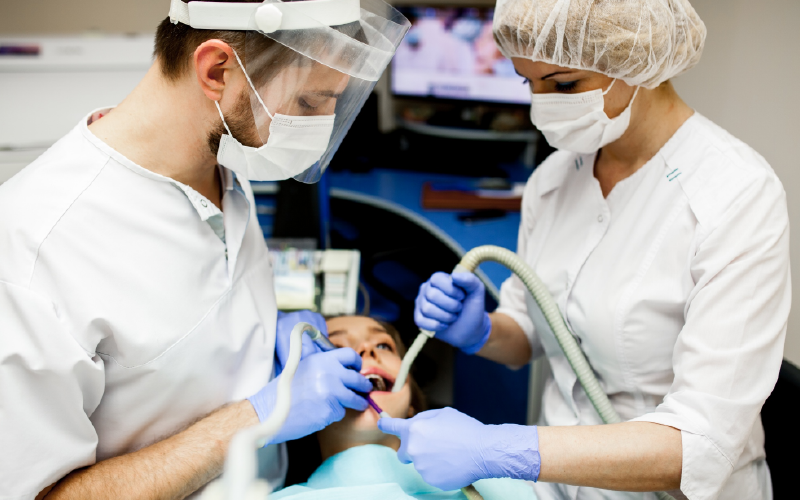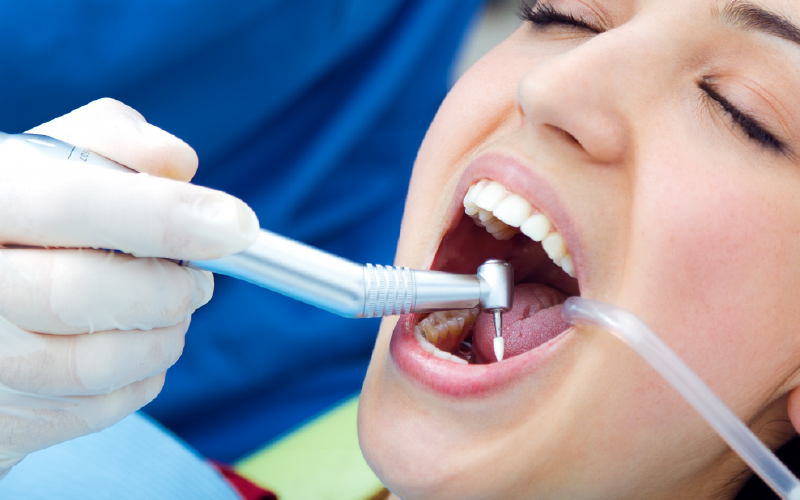Tooth extraction, a routine dental procedure, stands as a critical step in maintaining oral health. As we delve into this topic.
we’ll uncover the intricacies of tooth extraction, exploring its reasons and the necessity of understanding when and why it’s required.
It’s an aspect of dental care that deserves our attention, shedding light on the significance of informed decision-making.
Tooth Extraction: Definition, Purpose, and Benefits
Tooth extraction is a complex dental procedure where a tooth is intentionally removed from its natural position. This intricate process is skillfully carried out by dental experts. However, its significance surpasses the mere alleviation of pain or discomfort.
In its essence, Denver tooth extraction serves as a pivotal intervention aimed at eradicating factors that jeopardize oral health, disturb the harmony of one’s bite, or facilitate the resolution of critical dental issues.
By undergoing this procedure, individuals open doors to renewed oral well-being and a restored dental equilibrium.
Whether it’s to address an impending threat, correct misalignment, or tackle severe dental ailments, tooth extraction emerges as a cornerstone of modern dental care. Embracing this intervention can lead to a healthier, more balanced, and confident smile.
When Should You Consider Tooth Extraction
The removal of a tooth from its bone socket is known as a tooth extraction. This procedure is usually performed when a tooth is damaged, decayed, infected, or poses a risk to the overall oral health. The following are a few typical reasons for tooth extractions:
-
Severe Decay

When tooth decay progresses to an advanced stage and affects a significant portion of the tooth, it might not be salvageable through other dental procedures like fillings or crowns. In such cases, extraction might be necessary to prevent the spread of infection.
2. Advanced Gum Disease
Also known as periodontal disease, advanced gum disease can lead to the weakening of the supporting structures around the tooth, including bone. If the tooth becomes too loose and cannot be stabilized, extraction might be needed.
3. Impacted Wisdom Teeth

Wisdom teeth, also known as third molars, often emerge in a way that causes pain, swelling, and potential damage to adjacent teeth. When they are impacted (unable to fully emerge), they can lead to infection, cyst formation, or other complications.
4. Crowding
Sometimes, there might not be enough space in the mouth to accommodate all the teeth comfortably. In such cases, a dentist might recommend extracting one or more teeth to alleviate crowding and create room for proper alignment through orthodontic treatment.
5. Infection

If a tooth’s pulp (the innermost part of the tooth containing nerves and blood vessels) becomes infected due to deep decay or trauma, root canal therapy is often the preferred treatment.
However, if the infection is severe and cannot be effectively treated, extraction might be necessary to prevent the infection from spreading further.
Read Also: Managing Dental Anxiety During Extractions
The Extraction Procedure: What to Expect
Tooth extraction, a routine dental procedure, might seem intimidating at first glance, but understanding the process can alleviate much of the apprehension.
Here, we’ll delve into the step-by-step breakdown of a typical tooth extraction, highlighting the various techniques employed, the anesthesia options available, and the crucial aspect of pain management.
Additionally, we’ll explore the preparatory measures before the extraction and delve into the vital realm of aftercare, ensuring a comprehensive understanding of what to expect.
Tooth Extraction Process
-
Assessment and Diagnosis

The journey begins with a thorough examination of the affected tooth. X-rays might be taken to evaluate the tooth’s position and root structure, aiding in formulating the extraction strategy.
-
Anesthesia Administration
Before proceeding, the dental professional administers anesthesia to ensure a pain-free experience. Local anesthesia numbs the area around the tooth, and in some cases, conscious sedation might be offered to promote relaxation.
-
Incision and Access

If necessary, a small incision is made in the gum tissue to expose the tooth and its root. This step is typical for impacted or partially erupted teeth.
-
Loosening and Extraction
Utilizing specialized instruments, the dentist gently rocks the tooth back and forth to loosen it from the surrounding tissues and its socket. In some cases, the tooth might be divided into sections for easier removal.
-
Cleaning and Stitches

After successful extraction, the socket is cleansed to remove any debris. Stitches may be needed to close the incision, depending on the case. Some cases involve dissolvable stitches or no stitches at all.
Read Also: Red Flags of Root Canal Trouble: Act Now
Different Techniques for Extraction
Tooth extraction, a common dental procedure, involves two primary techniques: simple extractions and surgical extractions. Each method serves specific purposes based on the tooth’s condition and location. Let’s take a closer look at how these techniques differ and when they are utilized.
-
Simple Extractions
Simple extractions are suitable for visible teeth with uncomplicated anatomy. Typically used for severely damaged or orthodontic-related extractions, this technique involves numbing the area with local anesthesia. An elevator gently loosens the tooth, while forceps remove it. This minimally invasive method is followed by aftercare instructions for swift recovery.
2. Surgical Extractions
Surgical extractions handle complex cases like impacted wisdom teeth or broken teeth below the gumline. Local or general anesthesia may be used. An incision exposes the tooth and bone, with potential bone removal. Tooth division may be necessary before extraction. Stitches might close the incision. Recovery might be longer due to the procedure’s intricacy.
In either case, the aim is optimal healing and patient comfort. Dental professionals assess each situation for the most appropriate technique. Consult a dentist or oral surgeon to determine the suitable approach for your extraction, ensuring a healthy smile.
Read Also: New Techniques to Prevent Bone Loss After Extractions
Recovery and Healing After Tooth Extraction
The process of recuperating from a tooth extraction necessitates meticulous care to facilitate a seamless healing journey. It’s important to anticipate the initial discomfort, swelling, and minor bleeding, which are typical and transient occurrences.
To ensure effective healing:
- Rest and follow post-op instructions for pain relief and oral hygiene.
- Avoid disrupting blood clots to prevent dry socket.
- Stick to soft foods, avoid smoking/alcohol, and manage pain as directed.
- Maintain oral hygiene, attend follow-up appointments, and limit strenuous activities.
- Use cold compresses, stay hydrated, and communicate any concerns with your dentist.
Potential Complications
Though rare, complications can arise after a dental extraction. Be vigilant to address them promptly.
- Dry Socket
Dry socket results when the extraction site’s blood clot dislodges, causing pain. Prevent by avoiding smoking, straws, and rigorous rinsing. If severe pain occurs, contact your dentist.
- Infection
Infections are possible post-extraction. Recognize signs like pain, swelling, pus, or fever. Follow aftercare instructions, maintain oral hygiene, and take prescribed antibiotics.
Replacing Extracted Teeth: Restoration Options
- Dental Implants: Mimic natural tooth root.
- Bridges: Fixed prosthetics spanning gaps.
- Dentures: Removable for multiple missing teeth.
Considering aesthetics, functionality, and long-term oral health is crucial when choosing a restoration option. Consulting with a dental professional can help determine the most suitable choice for each individual’s needs.
Read Also: Emergency Tooth Extractions: When Immediate Action is Needed
Maintaining Oral Health
Avoiding extraction starts with good oral care. Regular dental check-ups catch issues early. Maintain oral hygiene—brush, floss, and use mouthwash. After extraction, be gentle with the area and protect the remaining teeth from decay by limiting sugary intake and maintaining regular dental cleanings.
Bottom Line
In the realm of dental care, the necessity of tooth extraction reveals itself as a pivotal chapter. Understanding the reasons behind this procedure bridges the gap between oral health and overall well-being. When faced with the prospect of tooth extraction, seeking the best affordable dentist in Denver co becomes paramount.
At Kids & Adult Dental Clinic, we recognise that tooth extraction is not just a procedure; it’s a thoughtful strategy woven into the fabric of oral health.
Our dedicated team, equipped with a wealth of experience, offers specialized services. By merging expertise with compassion, we ensure that every step is taken to preserve your dental landscape while safeguarding your well-being.

